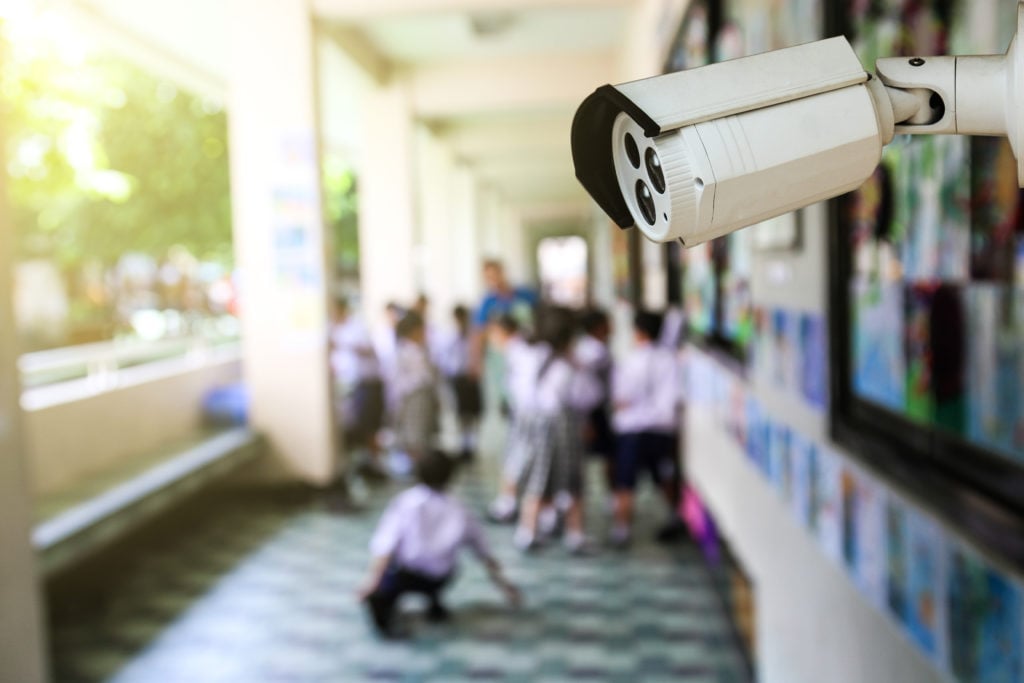
This blog is written by Supercircuits customer Collin Dimick, Assistant Supervisor to Murray School District. If you have a story to share or a security topic that you would like to discuss, please feel free to email us at [email protected].
At home and at work, I have experienced two incidents within two weeks. In one case, we have no footage at all that will help us apprehend the vandal, in the other case, we have footage that helps us see what happened and when, but isn’t clear enough to make a positive identification of the criminal. How is that possible?
I am a professional in the industry, and have been for 10 years; shouldn’t I be the one person who always gets his guy? And prevents incidents in the first place? I want to tell you about the realities of the decisions we all have to make on our security infrastructure, because unless you have an unlimited budget, there will be tradeoffs and tough decisions ahead of you.
Designing your plan
There are three key elements to consider when you are designing your security plan – your budget, required coverage and any limitations to installation in your desired coverage areas. All of this comes together to answer the one key question, which is what do you want to accomplish? So let’s start there.

Considering the goal of your security plan, whether at home, or if you are responsible for this at work, may take more time than you expect. At home, you may need to consult a spouse, and that can be speedy as it’s just the two of you, but at work, depending on the size of your organization and the scope of your responsibility, there can be many, many people who have an opinion about what’s important –
- Is it to prevent incidents from occurring?
- Is it to have top-grade imagery after an incident in order to aid in apprehension and conviction?
- Should we protect the perimeter or are we focused on key hotspots that hold an importance level worth monitoring specifically?
It is worth the time to jot down the key goals of your plan and make sure everyone is on the same page with what you are trying to accomplish. Because when something does happen, it will fall into one of two categories: you get hit exactly where you are covered…or you don’t.
The last thing you want is anyone pointing fingers in one direction. At work, and at home, I focus first and foremost on safety and security – I look at doorways in and out, the distance that one camera can cover and I make sure there is the proper lighting. There are a host of considerations and over the years I have learned from others, and from my mistakes, to fine-tune my own checklist.
Budget
Now that you have a plan, and you’ve gotten everyone to dream about what the needs are, let’s hit the cold reality of budget. Rarely, you will have enough in your budget for everything that is in the plan and often you have to make tradeoffs based on priorities.
At work, with multiple buildings, you want to try to use the same DVRs throughout your system, and always keep system expansion front-of-mind. As far as cameras are concerned, you’ll want what is the best fit for your needs. For example, a lower lux and IR range make a big difference in low light applications. I use the helpful guides and calculators from Supercircuits to help me with many decisions, like cable size length and power draw which are critical.
At home, we recently made the decision to install a camera outside to monitor our parking area, with the main goal of deterring and a secondary goal of capturing basic video should something occur. We didn’t want to spend a lot of money on the system, and decided on an entry-level camera that would withstand the weather and capture basic images and a higher-end DVR, which should be your main focus, that is easy to use with plug-and-play features.

One of the incidents I mentioned earlier happened at home. We captured images of what exactly occurred and when, but didn’t recognize the person. I posted the video online to see if anyone in my community might recognize something about the criminal.
Well, let me tell you, the comments about the video footage were downright nasty in some cases, things like “is that footage even digital?” and “looks like Casper the Ghost” and “aren’t you a security professional? Is this the quality of your work on the job?”
As I mentioned earlier, our goal at home was never to apprehend, it was to deter, and we made decisions based on those goals. It wasn’t meant to be a showcase of the latest equipment. Sure, an IR camera would have solved the problem, but a budget tradeoff was part of the plan – I stand by the original equipment purchase that we made.
At a minimum, the police know a lot more about what happened than they would have without it, like the time it occurred, that there were two people, the type of transportation they used and their entire approach to the burglaries that impacted every person on my street.
Tradeoffs
Let’s take a look at the next two areas for tradeoffs in your security plan as one item, because the coverage you desire goes hand-in-hand with the installation capabilities in those areas. For scope of coverage, there are a few key areas to consider, including perimeter monitoring, entryway monitoring or specific focal point monitoring.
When you look at the perimeter, like a driveway entrance, or fencing entryways, you have weather and scope of camera as top priorities. Depending on the size of the grounds in question, you are going to need to make some calls on which is more important and where you have the weakest security.
Entryways to a building can be easy to cover… unless you are talking about a multiple-building situation, which is what I deal with at work. If you have one building, you may have up to two doors, when you add more buildings or even larger sized buildings with multiple doorways, you need to as yourself – is it necessary to try and cover every single doorway?
You can utilize access control tools to complement your surveillance activities, but even that isn’t foolproof as someone on the inside can provide access to someone on the outside without you knowing.
Another element to consider about entry points is – which way do you want to look? Is someone trying to get in, or do you need to see the direction of someone who has already entered? The tradeoffs list continues, especially when you layer in the installation capabilities for each device – will you need wireless? Can you run cables? Is IP required and can we adequately reach the installation point? Is there a potential for vandalism?
What I use:
“The service at Supercircuits is remarkable, not only can they ‘live video’ display their products before you buy, but their tech support has been outstanding when I’ve needed it. I have never had an issue unresolved and feel confident with my warranties.”
At work we use a lot of the PTZ cameras, both vandal proof and the industrial quality outdoor speed domes, combined with the higher resolution outdoor IR domes to double our outdoor coverage. My DVRs of choice have been the 32 channel hybrids and the enterprise 16 channel with DVD burner.
At home, a solid system would have four channels, a 500MB hard drive and cameras that would provide some visibility at night. This type of system, which has everything you need, gives you 99% positive results with a negative 1% result (video loss).
Anyway, these are all the things that I consider when it comes to surveillance decisions and my security plan overall, both at home and in my profession. Choosing the system that’s right for you and preparing for the up, and down, sides of your choice is part of the thinking required.
When you make a choice, you need to be clear about what you’re trading off and why, ensure you have the critical pieces covered, and then feel solid about the tradeoffs you have made. And definitely get a surveillance system because my five dogs didn’t work! Thanks

About Collin Dimick: Currently the Assistant Supervisor to Murray School District, Collin started working there in 1993 as a custodian, leveraging his experiences running his own business as a contractor doing home repair and remodeling. Collin is responsible for the installation and repair of surveillance and door security systems, as well as energy management and building maintenance.





About The Author: Supercircuits Team
More posts by Supercircuits Team